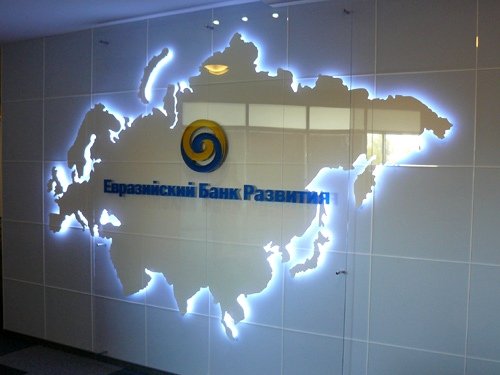


ArmInfo. The growth of index of economic activity of Armenia in June 2017 remained at a high level and amounted to 5.1% by June 2016. The increase in industrial production in June slowed to 3.8% y / y after a surge in the previous month by 20% y / In The dynamics of agricultural output in June reached a positive level (an increase of 3.4% y / y), partly due to the low base of the previous year. Negative rates of growth remained in construction (-4.4% y / y). Such data on Armenia's economy are contained in the July macroeconomic review of the Eurasian Development Bank (EDB) for EDB member countries.
It is noted that in the second half of 2017, in addition to the recovery dynamics of consumer activity, support for the growth rates of the economic activity and GDP index of Armenia as a whole will be supported by the low base of the previous year. Against this background, GDP growth is expected to grow at the level of 5.4% in 2017. Increase in retail trade turnover in June slowed slightly to 3.5% y / y after growing by 9% and 9.5% y / y in previous months, which may partly be due to a slowdown in the growth of remittances in June.
Negative balance of foreign trade balance in the first half of 2017 on 30% (USD 190 million) exceeded the level of the same period of the previous year. In June, the growth of imports of goods (29% y / y) was preserved in comparison with exports (19% y / y) versus the background of consumer demand recovery. One of the main directions for expanding exports is Russia (an increase of 27.1% y / y in January-June), facilitated by the recovery of economic activity in Russia and the dynamics of the exchange rate (weakening of the nominal exchange rate of the dram to the Russian ruble in January-June 2017 By 21.3% compared to January-June 2016).
Annual inflation in June remained in the area of positive indicators and amounted to 1.1%. Against the backdrop of a recovery in economic activity and an increase in the inflationary impact of domestic demand, inflation will gradually recover and at the end of 2017 we are expected to reach 2.3%.
Remained dynamics of remittance volumes are preserved. Support for domestic demand and economic activity in general continues to be the growth of remittances from abroad. According to the Central Bank of Armenia, the positive growth in remittances of individuals in dollar terms increased in June 2017 by 9.1% yoy, while the increase in money transfers from Russia amounted to 8.9% yoy. The surplus of the state budget in June amounted to 1.7 billion drams. In January-June, the deficit decreased more than twofold compared to the same period in 2016 and amounted to 38.3 billion drams. According to the budget rule, in 2017, the budget deficit should not exceed 152 billion drams. The growth of budget revenues for January- June 2017 amounted to 6.3% yoy, while expenses fell by 1.8% yoy.
The macroeconomic round-up section is noted that despite the positive dynamics of the first half of the year in the field of economic recovery of the countries participating in the Eurasian Development Bank (EDB), which continued in June, in most countries of the region, risks for these positive trends have been outlined. The report emphasizes that against the background of the depreciation of exchange rates and the growth of inflationary pressure, central banks (except the National Bank of the Republic of Belarus) suspended the reduction of the key rate by July, which was accompanied by a tightening of the rhetoric of regulators. In addition to reducing the possible scale of stimulating economic activity by lowering interest rates, in most EDB countries in the first half of the year a significant reduction in the budget deficit was registered, which is partly dictated by the need to reduce the vulnerability of state budgets in relation to commodity price volatility or the desire to prevent high public debt growth. With the reduction of monetary and budgetary incentives, the prospects for further recovery of EDB countries will largely depend on structural measures to increase investment growth and increase exports. "However, in these segments of the economy there are challenges - after restoring the growth of mutual trade and exports, further recovery dynamics of exports without support from commodity prices may prove more difficult, especially after the period of recovery of exchange rates of currencies and real wages," noted the chief Economist of the EDB Yaroslav Lissovolik.
The Eurasian Development Bank (EDB) is an international financial organization established by Russia and Kazakhstan in January 2006 to promote the development of the market economy of the participating countries, their sustainable economic growth and the expansion of mutual trade and economic ties. The authorized capital of the EDB is 7 billion USD. The Member States of the Bank are the Republic of Armenia, the Republic of Belarus, the Republic of Kazakhstan, the Kyrgyz Republic, the Russian Federation and the Republic of Tajikistan.